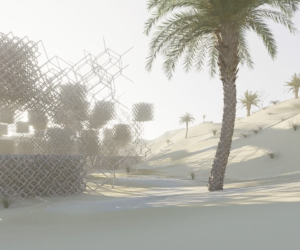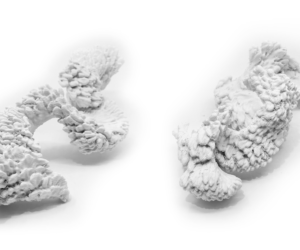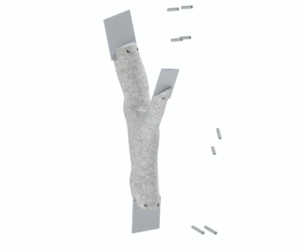Architects and RMIT students response to INVERT 4.0
As architects and students complete their submissions for INVERT 4.0 Zero Carbon Precinct, they reflect on the brief and share the ideas behind their response. Their drawings and models will be exhibited at The Stables, North Melbourne on November 9-10, 2022.
In a new future-focused sustainability initiative, green magazine and MINI are inviting Australian architects to consider how our cities will adapt to renewable energies and widespread uptake of low-emission transportation in the coming years.
Around the globe, the effects of climate change are becoming increasingly evident. The world has been pushed into a sobering new reality – one in which we are constantly scrambling to find more sustainable ways of living. From what we eat to the places we shop and our method of travel, everything we do has been thrust under the microscope. As a society, we have been called upon to think, and live, greener.
But besides the day-to-day steps we can take to help preserve our planet – using a Keep-Cup at our local café, donating our old clothes to charity instead of chucking them in the bin, or riding our bike into work instead of driving – there are still bigger lifestyle changes that need to be made, and on a broader scale.
Transport is an important part of this change. As Australia’s third-largest source of greenhouse gas emissions, a collective switch to lower-emissions modes of transport will be pivotal in reducing our nation’s emissions. According to the Climate Change Authority, the transport sector accounted for 18 per cent of our total emissions in 2020 alone.
Addressing this issue will require more than simply choosing to walk, cycle, or catch public transport to avoid driving. Currently, electrical vehicles (EV) are the most feasible, climate-friendly solution that, if adopted on a national scale, will reduce Australia’s carbon footprint significantly. While EVs generate some emissions during the battery-production process, they are reported to produce zero tailpipe emissions on the road.
Having recently entered the mainstream market, EVs are garnering a lot of attention. They are already seeing success in several countries around the world, and the Australian government has expressed a desire to increase the availability of low-emission vehicles; between 2020 and 2021, there was a surge in sales in Australia, with the Electric Vehicle Council reporting triple the number of EVs being purchased. But despite their rising popularity, low-emissions vehicles are currently sitting at a 2 per cent uptake in Australia – almost five times below the global average.
Access has played a major role in this appallingly low figure, with EVs outpricing many mainstream car models. However, another key factor is that Australia currently lacks the infrastructure to accommodate a widespread shift toward low-emission vehicles. The insufficient number of charging stations and gap in charging networks across the country, compounded by the fact that electrical charging can take considerably longer compared to filling up a car with petrol, is likely to have disincentivised many people from making the switch. This problem is particularly pronounced in Australian’s urban centres; as they become more densely populated, the amount of space required to set up appropriate charging facilities is only shrinking.
To address this issue and explore possible solutions, green magazine and MINI are partnering once to more to present the fourth iteration of their annual sustainability initiatives, INVERT 4.0. Using a typical urban precinct located in North Melbourne as a model, local architects are invited to find creative solutions for adapting the architecture to accommodate 100% renewable energy, as well as solving the EV charging problem in our cities.
The model precinct, which currently contains a petrol station, multi-residential buildings and commercial business and organisations, will be reimagined to accommodate electric cars, whilst simultaneously creating a community hub that attracts locals to become involved with the initiative and participate in creating a greener environment.
The architects will submit hand- or computer-generated drawings to illustrate their ideas, which will be enlarged and exhibited at The Stables, a building located within the site. Students from RMIT’s school of architecture will also create a scale-model design of the site, which will be exhibited alongside the architects’ drawings. Ideally, their ideas will provide urban city planners with a practical and sustainable solution whilst incentivising people to make the switch to low-emission transport.
The exhibition will be open to the public from the 10am – 5pm, 9-10th of November at The Stables, 2 Wreckyn St, North Melbourne. Free.


